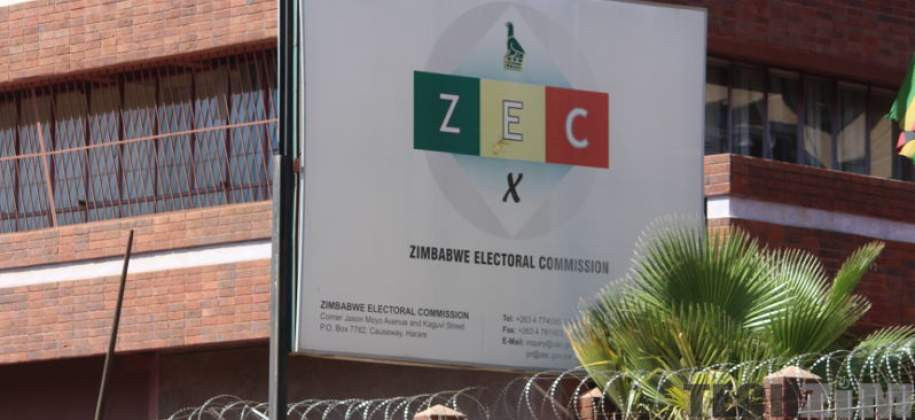
THE global economy is experiencing massive growth in debt exacerbated by the Covid-19 pandemic, which has forced countries to borrow to boost their reserves and bring some form of economic resilience.
The borrowed funds were also used to finance stimulus packages to support struggling businesses, at-risk groups (elderly, unemployed youths, women, people with disabilities, etc.), and financing education and health-related infrastructure among other initiatives.
Covid-19 pandemic has fuelled debt expansion as countries struggled to service their debts, with Zambia becoming the first country to experience Covid-19-induced debt default in 2021.
As of the end of 2021, total global external debt registered a nominal increase of 5,6% to US$9 trillion.
According to the latest World Bank 2022 International Debt Report, 60% of the countries eligible for the Debt Service Suspension Initiative are assessed at high risk of debt distress or are already in debt distress.
The escalation of geopolitical tensions from the Russia-Ukraine war which is leading to tighter global financial conditions, higher global inflation, lower growth, and higher stress on public finances is exerting massive adverse implications for low and middle-income countries’ debt dynamics.
Here at home, domestic resource mobilisation has remained a perennial challenge owing to bad economic policies, climate change, Covid-19, burgeoning debt as well as structural rigidities, such as corruption and illicit financial flows.
These challenges have continued to bedevil the government’s efforts to mobilise resources pushing it to over-rely on collateralised borrowing, which is often times not publicly disclosed.
- Young entrepreneur dreams big
- Chibuku NeShamwari holds onto ethos of culture
- LSU students win innovation prize
- Mhofela finally drops album
Keep Reading
Now, the nation is trapped in debt distress as it is failing to fully service its debts leading to the accumulation of arrears and penalties.
The prevailing unsustainable debt level is exerting dire developmental impacts on the economy and citizens.
Despite these impacts, the latest 2023 Zimbabwe Public Debt Statement released alongside the 2023 national budget shows continued borrowing appetite by the government.
The statistics show that total Public and Publicly Guaranteed (PPG) debt (external and domestic) including Reserve Bank of Zimbabwe (RBZ) debt stands at approximately ZW$10,97 trillion (US$17,6 billion), as ofthe end of September 2022, up from ZW$1,9 trillion (US$17,2 billion) recorded as of December 2021.
Of the total, external PPG debt accounts for 79,6% (US$14 billion or ZW$8,7 trillion), including Blocked Funds at 13,2% (US$2,3 billion or ZW$1,5 trillion) and domestic debt representing the balance at 20% (US$3,6 billion or ZW$2,2 trillion).
The amount for the compensation of Former Farm Owners (FFOs), amounting to US$3,5 billion (ZW$2,18 trillion), represents a significant share of the domestic debt at 97%.
The astronomical spike of debt figures by 477% in ZWL terms between December 2021 and September 2022 mainly represents a deterioration of the local currency against the USD, which depreciated from ZW$108:US$1 at the end December 2021, to ZW$622:US$1 as at end September 2022.
However, in USD terms, the total PPG debt registered a marginal increase of about 2,3% (US$400 million) between December 2021 and September 2022, owing to new disbursements for ongoing projects and Reserve Bank of Zimbabwe borrowing, as well as the continuous accumulation of penalties.
Further analysis of the total PPG debt shows that the debt of ZW$10,97 trillion as of September 2022 represents 104% of the 2022 GDP which is projected at ZW$10,55 trillion.
This shows the country is highly indebted as its debt-to-GDP ratio has breached the 70% threshold, which is set out in the Public Debt Management Act, as well as, the 60% threshold agreed by member countries under the Southern African Development Community’s (Sadc) macroeconomic convergence targets.
Regionally, the 2022 World Bank report shows that the external debt stock of low and middle-income nations in Sub-Saharan Africa (SSA) has increased to US$790 billion in 2021 -a new record high.
This is a 5,1% and 145,3% jump from US$752 billion and US$322 billion recorded in the decade ending 2020 and 2010 respectively. Consequently, the SSA region’s reserves-to-external debt plunged to 15% in 2021 from 19% in 2020 and 48% in 2010.
The figure abovecompares three debt ratios between major Sadc economies: External debt-to-gross national income, service-to-GDP ratio, and reserves-to-GDP ratio.
The continued growth of Zimbabwe’s debt is worrisome as it is now tied with Mozambique as a Sadc member with the lowest reserves-to-external debt ratio in the region.
Statistics show that as of December 2021, the duo had a reserve-to-external debt ratio of 6%, which is lower when compared to other highly indebted countries in the region: Zambia (11%), Mauritius (56%), Angola (22%), and Lesotho (43%).
This ratio shows how many dollars a country has in reserves for every dollar of debt owed to its external creditors.
The ratio also indicates how much money the government is setting aside for future use and its flexibility to react to adverse or unforeseen contingencies.
The dwindling reserves occur at a time the world is experiencing a seismic shift in climatic conditions as droughts, floods and cyclones are becoming more frequent and having a huge toll on the Global South.
Again, Zimbabwe is underperforming judging using the external debt service-to-exports ratio alternatively known as the debt service ratio.
The debt service ratio is a ratio of debt service payments made by or due from a country to that country’s export earnings.
As such, it is one of the key indicators for measuring the severity of a country’s debt burden.
The latest World Bank data shows that out of the 12 Sadc nations as covered in Figure 1, Zimbabwe is only one notch above the semi-interquartile range when arranged in descending order — that is starting with those countries with the highest debt service ratios.
Therefore, it means that Zimbabwe is among the Sadc nations spending more of their export earnings servicing external debt.
Nevertheless, in terms of transparency of budget processes, as measured by the International Budget Partnership’s (IBP) Global Open Budget Survey (OBS), Zimbabwe has moved 11 points up from No. 52 to settle at No. 41 out of 120 countries surveyed globally in 2021.
Within the African continent, Zimbabwe is ranked third after South Africa and Benin. This means that she is faring well in ensuring public access to budget information, allowing the participation of citizens in national budget formulation and implementation, and respecting the role of budget oversight and accountability institutions like the Parliament and Supreme Audit Institutions (SAIs).
While there is still a lot to be desired in Zimbabwe’s budget processes, the upward trajectory of its global ranking by IBP since 2019 is a welcome development.
But, be that as it may, Zimbabwe is facing an economic meltdown. Despite a record generation of foreign currency receipts (up 53,5% from 2020 to US$9,7 billion in 2021), the Treasury is grappling with acute forex shortages to finance infrastructure development, provision of public services, and funding of critical imports like electricity as well as support the tumbling Zimbabwe dollar (Zimdollar).
Largely due to a faltering Zimdollar, which had lost at least 75% of its value against the USD between year-to-date, the country is facing the highest inflation rate globally and this has plunged about 40% of the population into extreme poverty as estimated by the World Bank.
It is worrisome to note that public debt is set to jump significantly in 2023 as Treasury faces a mammoth task of financing a ZW$575,5 billion budget gap comprising an overall deficit of ZW$336,9 billion and net loan repayments of ZW$248,6 billion.
The Treasury proposed to finance this deficit by issuing a domestic bond to the tune of US$100 million and ZW$82,8 billion treasury bills (TBs), and a US$400 million external loan facility expected from Afreximbank.
Ahead of the 2023 harmonized elections, the Treasury will also gobble tens of millions of USD as loans to lawmakers and cabinet ministers together with their deputies.
Likely, these loans were not budgeted for and hence pose severe debt ramifications. The dire impacts of a ballooning and unsustainable debt,include crowding out of both private sector investment and public service delivery, over-reliance on resource-backed loans (RBLs), elevated long-term interest, tax, and inflation rates, and depletion of national reserves.
Currently, public debt is shrouded in secrecy as the public is unaware of the terms and conditions of some loans being accrued by the government.
Consequent to this, total PPG debt has reached unsustainable levels and is showing no signs of slowing down.
The situation is affecting the capacity of the state to discharge its developmental responsibilities and the realisation of human rights including social, economic, and cultural rights.
Also, the ripple effects of the prevailing unsustainable debt are the continued suffering of marginalised women and youths, who are more often than not suffering the quagmire of unemployment, fragile ZWL, and hyperinflation.As such, the time to resolve the debt conundrum is now!
Sibanda is an economic analyst and researcher. He writes in his personal capacity. — [email protected] or Twitter: @bravon96











